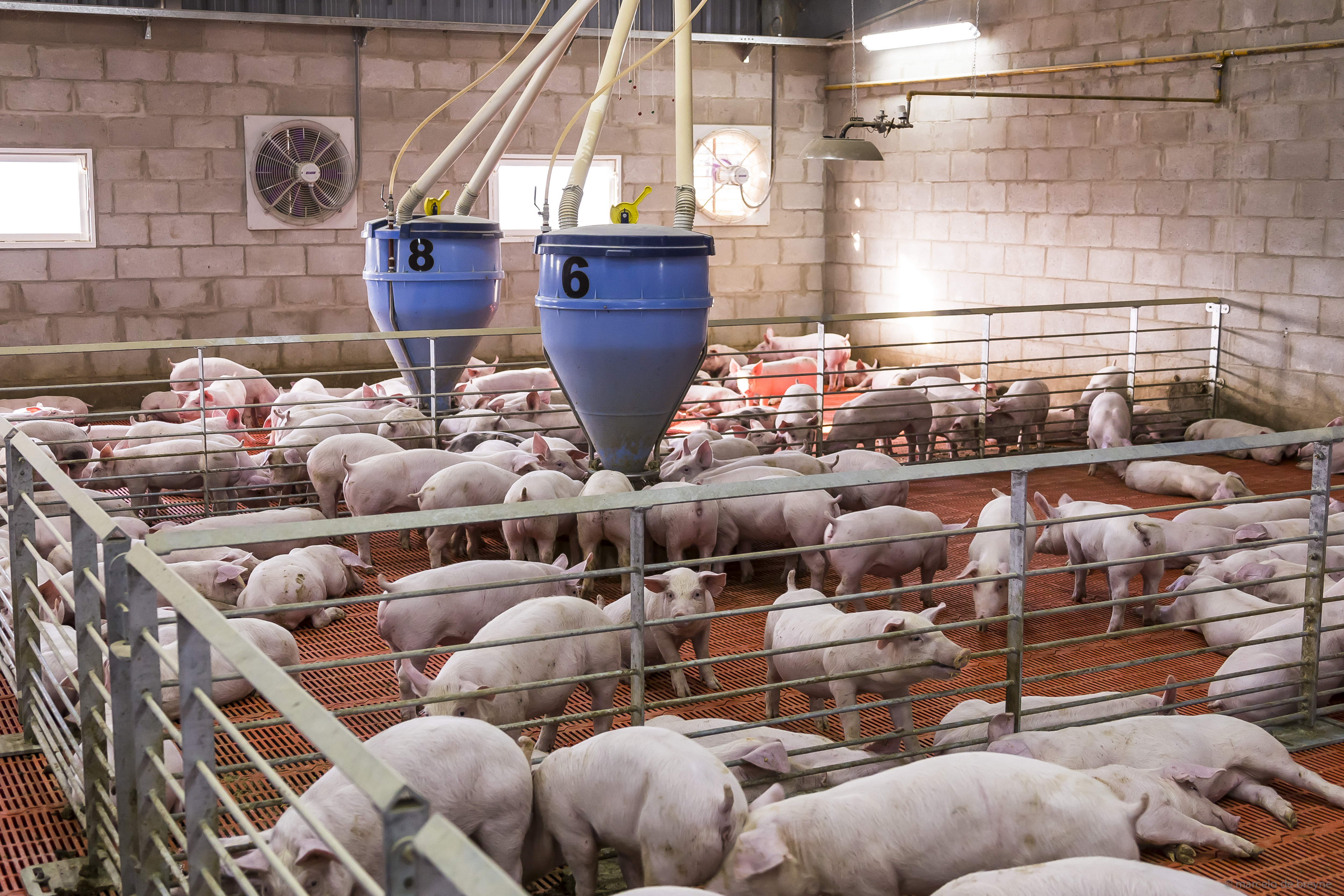



The ecology of porcine respiratory disease complex in Brazil
Researchers have tracked Brazil’s outbreaks of porcine respiratory disease complex (PRDC) and found that though infection was widespread, good management practices could prevent PRDC from devastating commercial pig herds.A recent review published in Porcine Health Management has recorded the occurrences and severity of porcine respiratory disease complex (PRDC) in Brazil’s swine herd. Researchers were able to follow the path of infection by identifying antibodies in serology and analysing lung tissues in multi-site pig herds. The researchers found that M. hyopneumoniae, a key pathogen in PRDC presentation, was widespread despite strict vaccination schedules. The researchers also found that though there were extensive PRDC antibodies in Brazil’s commercial pigs, adopting good management techniques could keep the infection at bay.
PRDC in Brazil
PRDC refers to a group of respiratory diseases caused by the interaction of infectious pathogens, different production systems, management practices and environmental stressors that impact commercial pig herds. Pathogens that contribute to PRDC include Mycoplasma hyopneumoniae, Actinobacillus pleuropneumoniae and swine influenza virus.
M. hyopneumoniae is the primary cause of respiratory problems in Brazil’s swine herd. The infection accounts for 97 percent of lung lesions in slaughtered pigs, and co-infections with Pasteurella multocidaare common. Lung infections can be troublesome for producers because they are a common cause of carcass condemnations and can slow the slaughtering process.
PRDC is a huge challenge for Brazil’s pork industry, causing significant on-farm and economic losses. Producers have been taking steps to prevent disease outbreaks through vaccination and improved management practices, but it remains a deeply entrenched problem.
The study
In order to evaluate the occurrence and severity of PRDC, researchers collected data from 30 farrow-to-finish production units in Goías state, Brazil. Serology, tissue samples and vaccination schedules were recorded. The researchers also collected information on management practices, housing, and productive indexing. The serology samples included 2,536 sows at all stages of production and represented over half the sows in Goías state.
- Nursery pigs were sampled at 50 days.
- Grower pigs were sampled at 94 days.
- Finishing pigs were sampled at 130 days.
- Slaughter pigs were sampled between 150-180 days.
900 lung samples were collected at slaughter and graded on a pneumonia index (PI). Herds with an average PI from 0-0.55 were considered pneumonia-free and were given a 0 grade. Indexes ranging from 0.56-0.89 were given a 1 grade, meaning that pneumonia was present but wasn’t a threat to the herd. PIs over 0.90 were considered severely affected and given a grade 2.

Results
All the herds were seropositive (had antibodies, indicating a previous or current infection) for M. hyopneumoniae at some stage of production despite vaccination. Most of individuals in herds were seropositive at finishing and slaughter. However, the researchers couldn’t determine if the M. hyopneumoniae antibodies were present from an active, resolved or subclinical infection.
Swine influenza virus (SIV) was widespread in the sample as well. In un-vaccinated herds, 29 percent of the sampled sows were seropositive. When the data was analysed by production phase, researchers noted a higher presence of anti-SIV antibodies at slaughter than in the nursery stage. This would indicate that SIV is continually circulating in Goías state’s swine herd. However, researchers couldn’t identify the particular strain of SIV impacting the herds, making vaccination recommendations difficult.
Actinobacillus pleuropneumoniae was less prevalent in the sample. It impacted 22.4 percent of pigs in the nursery phase and less than 1.5 percent of animals at slaughter.
Of the 900 lungs sampled, 665 had lesions, and every herd contained pigs with Mycoplasma-like lung lesions. The pneumonia index (PI) showed that 73.3 percent of herds were strongly affected by lung conditions, the most common infection being bronchopneumonia. Though this finding is troubling, most of the herds sampled were graded as 1 on the index, meaning they had intermediate lung symptoms and weren’t overly threatened by pneumonia infections.
The researchers did have some positive results. After data analysis, they noted that as producers adopted protective measures, instances of infection decreased. Having empty periods between farrowings and adopting an all-in/all-out management decreased instances of respiratory disease.
Key conclusions
The researchers hypothesise that the high proportion of seropositive pigs and the presence of Mycoplasma-like lung lesions at slaughter, vaccination may not be preventing pathogen circulation in later phases of production. The high seropositive counts for M. hyopneumoniae, SIV and Actinobacillus pleuropneumoniae could indicate that the herds are shedding virus and circulating pathogens despite vaccination. Though this finding is alarming, the researchers not that there wasn’t any direct evidence of pathogen circulation.
In order to address the prevalence of SIV, the researchers recommend adopting cross-fostering at the nursery stage to improve colostrum ingestion. This will boost piglet immunity and give more protection against infections diseases.
When analysing the prevalence of pneumonia, the researchers note that Goías state’s rate of infection isn’t outside Brazil’s normal levels. However, pneumonia rates are still troubling. Pneumonia infections can intensify herd losses and leave surviving pigs susceptible to secondary infections. Researchers recommend reducing infections by addressing herd-level risk factors and adopting good management and husbandry practices.








